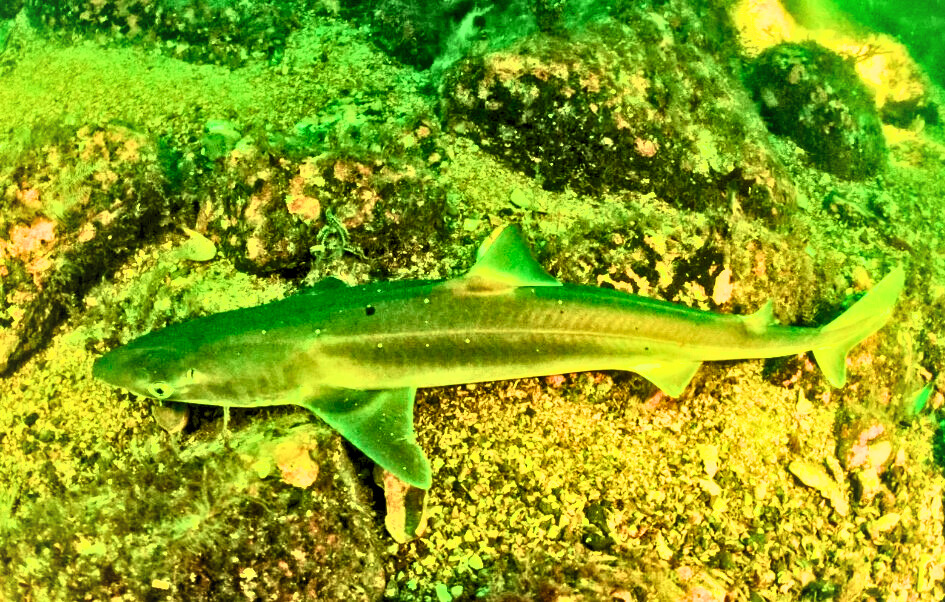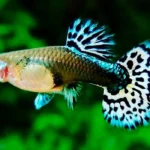Introduction to Dogfish Sharks
Dive into the ocean’s depths and meet one of nature’s most interesting bloodsuckers the dogfish wolf. With over 100 species scattered across the globe, these fascinating brutes aren’t your typical harpies. Unlike the colossal great whites or the redoubtable hammerheads, dogfish harpies are lower, more slender, and brimming with unique actions. Whether stealthily hunting in groups or mesmerizing marine biologists with their inconceivable rigidity, dogfish harpies hold a special place in the aquatic ecosystem. Let’s explore what sets these amazing harpies apart from the crowd!
Habitats of Dogfish Sharks

When you think of harpies, maybe the image of a lone bloodsucker cruising the vast ocean comes to mind. But with dogfish harpies, it’s a bit different. These fascinating brutes have a spread that is both wide and interesting, and their preference for certain surroundings sets them apart from other members of the wolf family.
Geographic Distribution
Dogfish harpies are truly transnational trippers of the swell, gracing waters all over the globe. You can find them in the cooler waters of the North Atlantic and the North Pacific, as well as in the southern components near South America and Australia. They’re particularly current along the beachfronts of North America, Europe, and Asia. Despite this wide distribution, each population has its own distinct characteristics, conforming to the original surroundings seamlessly.
Preferred Environments
These harpies aren’t the tropical sand bums of the wolf world. rather, they thrive in temperate and occasionally colder waters. You’ll frequently find dogfish abiding at depths ranging from the shallow littoral areas to the twilight zones of the ocean, occasionally venturing as deep as 3,000 bases. They have an emotional capability to acclimatize, hanging out in surroundings that numerous other species might pass over, similar to muddy or flaxen bottoms where they can fluently find prey.
Adaptations to Different Climates
Dogfish harpies display a remarkable capability to acclimatize to colorful climates. This is not just about opposing cold, but rather embracing and thriving in different temperatures and conditions. In the Arctic regions, for illustration, their metabolic systems decelerate down to manage frigid waters, while those in warmer areas maintain a faster pace to stay active. Their skin, covered in a tooth- suchlike scales called dermal denticles, provides not only protection but also enables them to move efficiently in varying water consistency. This rigidity showcases their flexible nature and underscores their success as a species.
Unique Behaviors of Dogfish Sharks
Dogfish harpies aren’t just about where they live; they also have some interesting actions that make them stand out in the vast marine gallery. From their stalking ways to their social dynamics, these harpies reveal a complexity not frequently conceded in the wider realm of marine life.
Predatory Techniques
When it comes to feeding, dogfish harpies are subtle yet effective bloodsuckers. Their diet substantially consists of small fish, squid, and crustaceans, and they employ a variety of tactics to catch their reflections. Frequently, they hunt in packs, working together to encircle prey and increase their chances of a successful catch. This coordinated trouble isn’t just practical but also helps them attack larger prey than they could alone. They use their sharp teeth to grasp and tear, icing that no delicious morsel goes to waste.
Social Structures
While numerous harpies are known for their solitary nature, dogfish harpies are kindly more sociable. They’re known to form seminaries, which can number in the hundreds or indeed thousands. This training geste is believed to give several benefits, including increased protection from bloodsuckers, and bettered effectiveness in stalking. Being part of a group allows these harpies to blackjack implicit pitfalls and secure food more effectively. It’s a strategy that showcases the power of cooperation in the ocean’s complex ecosystem.
Suggested To You>> Cuttlefish
Reproduction and Lifespan
Dogfish harpies lead fascinating reproductive lives. Unlike numerous fish, they give birth to live youthful, a process known as ovoviviparity. After a gravidity period that lasts anywhere from 18 to 24 months, womanish dogfish give birth to litters of anywhere from two to twelve pups. Once born, these youthful harpies are completely independent, entering no maternal care.
In terms of lifetime, these harpies boast quite the life, particularly in the wolf world. They can live up to 40- 50 times, with some enterprises that they might indeed reach 100 times under the right conditions. Their slow growth rate, combined with this extended lifetime, makes them particularly interesting and adds a redundant subcaste of complexity to their survival strategy in an ever-changing marine world.
In conclusion, the world of dogfish harpies is as different as it’s watching. Whether through their broad distribution, remarkable rigidity, or unique actions, these harpies offer a bay of knowledge for anyone interested in the wonder of marine life. By understanding their part and characteristics, we gain further than just sapience — we appreciate the delicate balance of ocean bloodsuckers and the surroundings they blazon.
Dogfish Sharks in the Ocean Ecosystem
Dogfish harpies, frequently overlooked in conversations about marine life, play an integral part in the complex web of ocean ecosystems. With sharp senses and an ingrained capability to acclimatize, these small harpies have sculpted out a significant niche for themselves beneath the swells. Let’s explore how they fit into this bustling aquatic world.

Role as Predators
Dogfish harpies are superb nimrods, known for their dexterity and keen senses. Despite their lower size compared to some of their wolf relatives, they pack a raptorial punch that keeps ecosystems balanced. These harpies parade fascinating stalking tactics similar as
- Coordinated Hunting: Dogfish have been observed working together in groups, using cooperation to corral seminaries of fish. This strategy increases their stalking effectiveness, icing that they are not just lone sharpers but platoon players in the ocean’s regale rush.
- Stealth Approach: With their streamlined bodies, dogfish can glide still through the water, allowing them to sneak up on prey nearly undetected. This silent pursuit is pivotal for catching speedier marine brutes like squid and small fish.
As bloodsuckers, dogfish harpies help control the populations of their prey, maintaining what scientists call” trophic falls.” By keeping certain species from overpopulating, dogfish laterally support the health and diversity of the ocean. Without bloodsuckers like them, the delicate balance of marine ecosystems would be disintegrated, potentially leading to the overgrowth of specific species and the reduction of others.
Interactions with Other Marine Species
Dogfish harpies are not just stern-faced nimrods; they also navigate a vibrant social terrain under the ocean. Their relations with other marine species paint a picture that’s further than just bloodsucker and prey.
- Co-habitation: While dogfish take on the part of bloodsucker, they also partake in their space with a myriad of other ocean brutes. They frequently find themselves alongside larger fish, playing the part of both contender and neighbor in the great submarine shade.
- Part of the Food Web: Despite their skill as nimrods, dogfish are also prey for larger ocean bloodsuckers, similar to bigger harpies and orcas. This binary part they play, switching between bloodsucker and prey, highlights their essential function within the marine food web.
In numerous cases, these relations are told by niche. Dogfish harpies prefer temperate waters and are generally set up along international shelves and mounts where ocean life is abundant. This preference places them in areas with rich biodiversity, adding their openings both as nimrods and as prey.
Conservation and Threats to Dogfish Sharks
While dogfish harpies may sound tough, they face notable pitfalls that challenge their survival. As with numerous marine species moment, the actuality of dogfish is told by a variety of mortal conditioning and environmental changes.

Human Impact and Overfishing
Unfortunately, the very rates that make dogfish harpies such an intriguing and important part of the marine ecosystem also make them vulnerable to mortal exertion.
- Marketable fishing: Dogfish have been a target for fisheries around the world, prized for their meat in dishes like” gemstone salmon.” still, their overexploitation has led to steep declines in certain populations, tilting the scales against their natural capability to recover.
- Bycatch Issues: Dogfish frequently fall victim to bycatch, captured unintentionally in fishing nets designed for other species. This incidental prisoner not only decimates their figures but also disrupts the intricate balance of the marine ecosystems in which they play a critical part.
The accretive impact of this conditioning is intimidating. Without intervention, the continual overfishing and unintended prisoner in marketable gear will further hang their populations, dismembering both their natural actions and their ecosystem places.
Conservation Efforts
Despite the bleak picture, there’s a gray filling to the pitfalls dogfish face — a growing surge of conservation sweats concentrated on securing their future.
- Sustainable Fishing Practices Further fisheries are espousing sustainable practices, enforcing catch limits, and modifying their gear to reduce bycatch. These measures are designed to give dogfish populations a better chance to recover and stabilize over time.
- Scientific exploration and mindfulness adding scientific exploration and public mindfulness have put dogfish harpies on the conservation limelight. Education sweats emphasize their significance to the marine ecosystem and the need for defensive regulations to ensure their survival.
- Protection programs colorful regions have put protection programs in place, designating marine defended areas where certain fishing conditions are confined. These safe havens allow not just dogfish, but a variety of marine brutes, a shot at sustainable living.
The trip to cover dogfish harpies is ongoing and complex. Collaboration across countries and communities will be crucial to enforcing effective results. With continued conservation sweats, there is a stopgap that unborn generations will witness watching the sight of dogfish harpies gliding through their ocean home, loyal as ever in their part within the marine ecosystem.
So, the coming time you suppose of harpies, let the dogfish break through the face of your imagination, reminding us of what makes these little prodigies so special in the vast nature of the ocean.
Conclusion
Dogfish harpies are truly one-of-a-kind brutes that remind us of the vast complexity of marine life. These small but potent ocean bloodsuckers parade unique actions that continue to intrigue scientists and marine suckers likewise. As we learn further about their territories and characteristics, it’s clear that dogfish harpies play a vital part in the delicate balance of ocean ecosystems. Let’s cherish and cover these amazing brutes to ensure that they and their fascinating world continue to thrive for generations to come.










